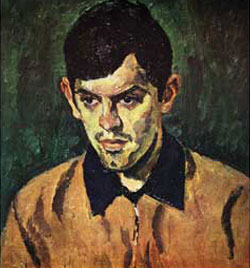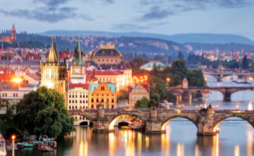You have to know what to look for, and you have to know where to look. They rarely appear in daylight, and they’re extremely shy of strangers. Sometimes, though, you see one by chance, hurrying along, head bent towards the street, body hugging the wall like somebody’s shadow.
You register them and they’re gone, scuttling up some side alley or into a doorway you hadn’t even seen. There used to be a lot more of them. Some learned to adapt, and shave. Those that didn’t now inhabit a new twilight world, this time one of their own choosing. They are, of course, the dissident-ex-dissidents (DeD). And their time is coming.
Again. But who exactly are the DeD? What do they think? How do they look? And would you know one if you met one?
Prague and the other major cities of the ex-communist bloc used to be full of them. President Havel used to be one of them. Hairy shamans of a lost world they are now no longer the sought-after creatures they used to be, giving interviews in kitchens and thick accents to visitors such as Philip Roth, Timothy Garton-Ash and Roger Scruton.
However, they have not yet completely disappeared and if you are one of the 105 million people who will visit Prague this year here is a brief guide to their history and how to spot them.
Firstly, although their distant roots may lie in a Central European romantic hero-poet-prophet proto-myth their recent genesis came with the flowering of the counter-culture in the liberal years of the mid and late Sixties. This is certainly when their appearance was resolved. Indeed many of them still wear clothes from this period. Under Husak and the era of Normalization in the Seventies and Eighties they went underground, leaving the theatres, universities and academies to take up new positions as window cleaners, bus drivers, caretakers, night-porters and the like.
And this is where the fatal change occurred. The more ambitious among them began to combine these trades with political dissent and, taking their name from their leader, came to be known as the Havel Gang. Their masterstroke was a document known as Charter 77. This enabled them ruthlessly to appropriate the dissident image in the late Seventies and to exploit it in the Nineties, when it came to be marketed under the Obcanske Forum company, and later Havel PLC himself.
Suddenly the dissident movement had found itself divided.
Between the activists and the quietists. Between those who could see their way to making vast fortunes in book sales overseas and those who couldn’t. This division festered throughout the Eighties, culminating in the famous split of late 89, when the Havel Gang, through methods still not fully explained, managed to take over the State.
The following years were, by their own admission, hard for the DeD. Under the old system they had had an excuse for doing duff jobs. Now none existed. Unfortunately, many now found themselves unable to return to their old professions. Having taken on the mantle of conscience of the nation they now had to face rejection and even scorn. In the new society people threw themselves into entrepreneurship and acquisition.
Unsurprisingly, they were not receptive to the message the DeD seemed to offer. That the market took as well as gave, that it was unforgiving to those who failed, and that it also involved a system, one which ruled not through suppression but bodily hygiene. Their time seemed truly to have passed, their last great gathering taking place at the Stones concert in August 1990. In that brief, hippy, happy dawn some even considered coming out from underground and making peace with the new society.
But then the clampdown began. Havel brought in the notorious axeman Klaus. Price liberalisation followed, McDonalds’ went up all over Prague and, worst of all, wave after wave of young American capitalist shocktroops started descending on the city.
The DeD were confused. These people looked counter-culture but they talked business, read the financial pages and did accounts as well as drugs. Slowly the DeD began to realise the nature of their error. They had fashioned the West in their own image.
So had everybody. The problem with their image was that it was twenty years out of date. What they had missed, and were now confronted with, was the fusion between counter and mainstream culture that had taken place since the heyday of the great guitar groups. For the first time they came face to face with the truth: they were a generation not so much surpassed as bypassed; an ex-generation fighting a generation X.
For many this realisation proved too much to bear. Those most deeply traumatised took the easy route and retreated into a fantasy Underground, permanently set around the early Seventies, becoming parodies of their former selves.
Others drifted away completely, shaved, washed and got real jobs.
But there still remained some who believed. From the corners and mouse holes of the State they had fashioned lives which could be called independent, which did not involve the mephistophelean bartering that made up the Communist version of the social contract. Their renunciation may have begun as a political act, and been temporary, but over the years it had become spiritual and permanent.
Now, strangely, without having changed their position, or personal habits, they are becoming relevant again. Not the addled old hippies who approach you in the bars and clubs, mouthing Beatles lyrics and hoping to get their drinks paid. The real DeD do exist. It’s just that you can’t see them. Because they’re where they really belong: underground.
But now their enemy is junk culture. You. Me. Us. Between us lies a divide. They can no more join the capitalist system than they could the communist. It was not for this that they dissented. And here the name is explained. Those who were once dissident find themselves dissident again.
They can truly be said, to be DeD.




